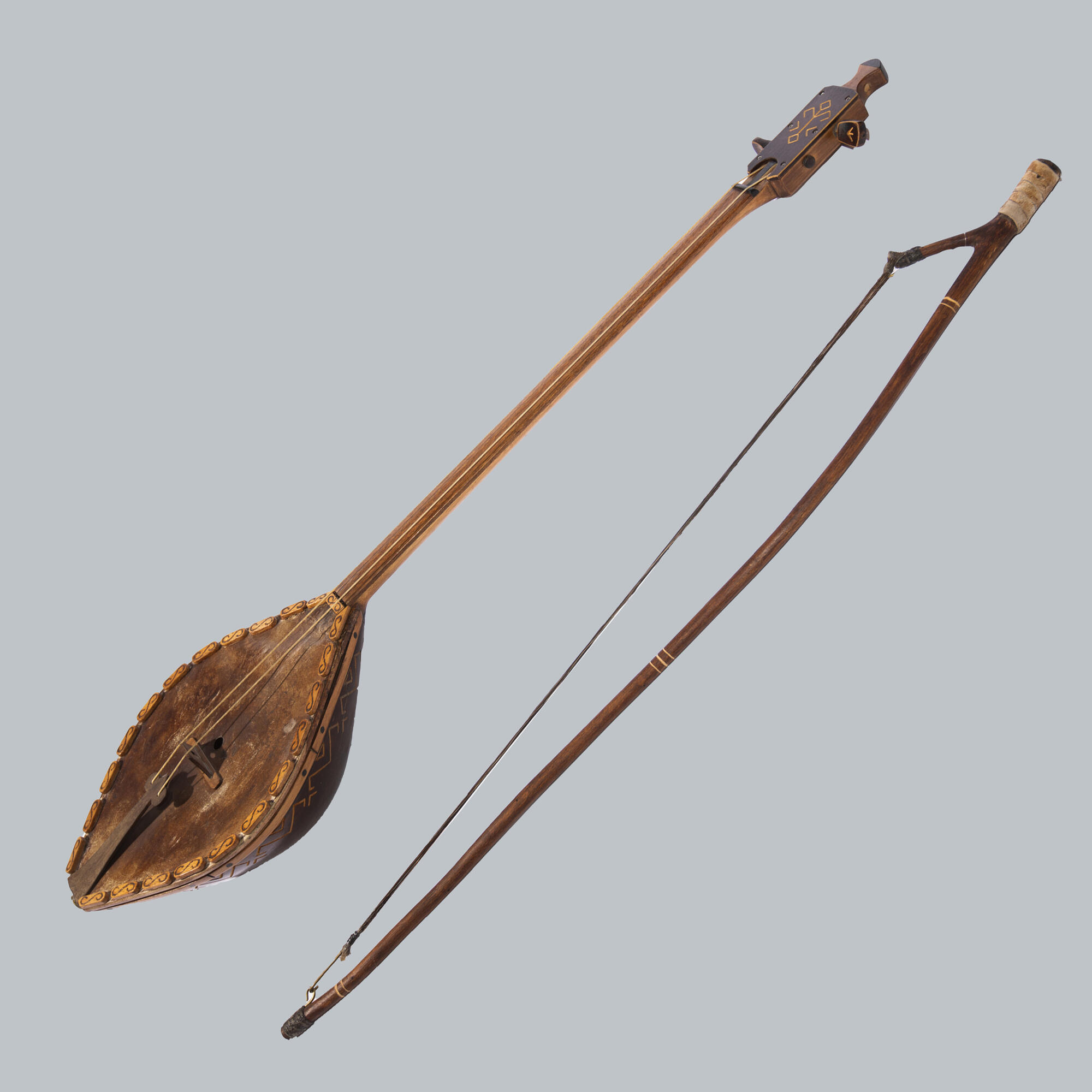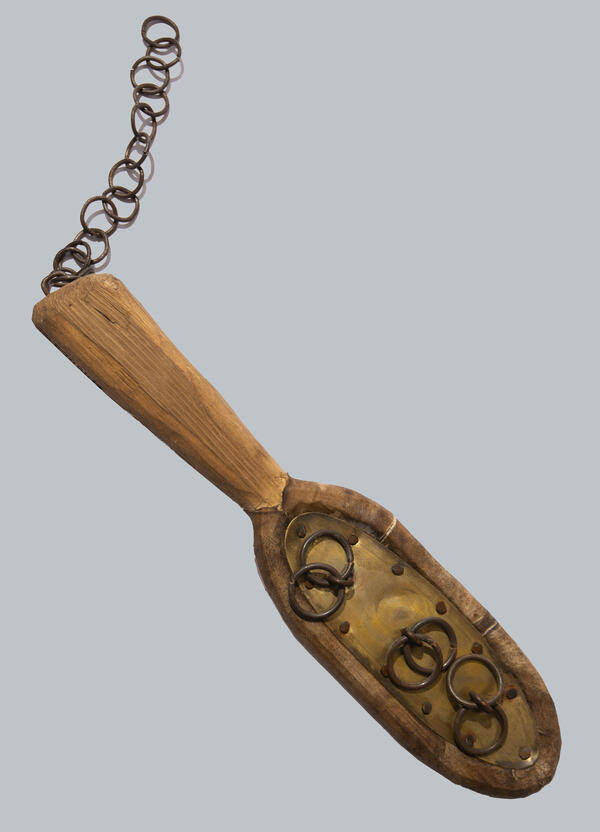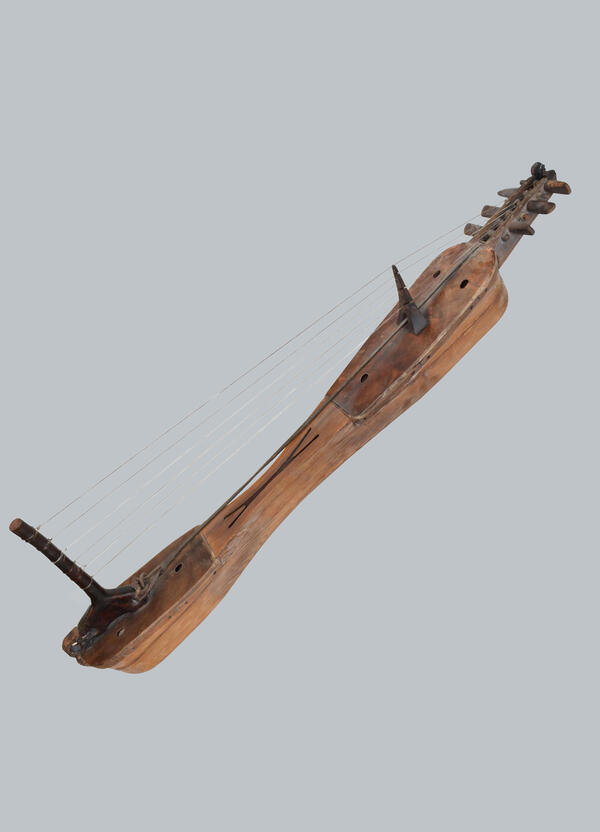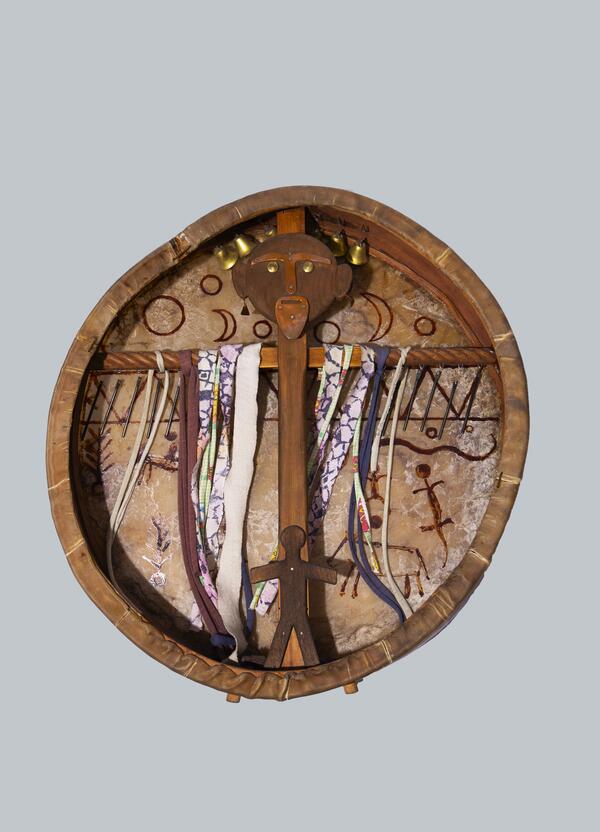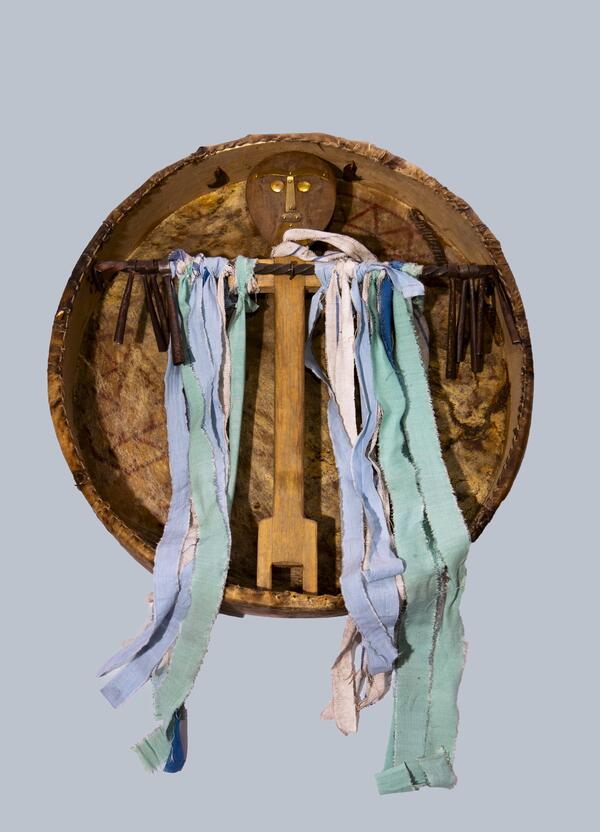The ikili is one of the Altai folk musical instruments rebuilt by Alexander Gnezdilov.
Legend has it that a young man once wandered into a cave and received the ikili from a spirit dwelling there. Upon returning home, the young man discovered that while he had been talking to the spirit inside the cave, many years had passed in the outside world. The young man became a wandering storyteller.
The ikili is played only by men — sitting cross-legged on a carpet, with the instrument placed on the left knee or slightly tilted to the left and held with both knees. Performers hold the bow in different ways, depending on their skills. Traditionally, the ikili was used to accompany vocal and instrumental folk tunes, songs, and simple pieces. Mordents, trills, and other ornaments were performed with the left hand.
This instrument is tuned in fourths and resembles a topshur, but has a higher range, a thin elongated fingerboard, and a high bridge.
Traditionally, the ikili’s body was made of cedar or larch wood from a tree that had grown in the shade, in the lowlands, because such wood is denser. To avoid cracking, the wood was boiled for several hours, removing the resin through evaporation, and then thoroughly dried. Leather was stretched over the sound board after soaking, while it was still wet, and then dried over a fire: the material had to become permeated with smoke.
The bow was made of a willow or bird cherry twig and strung using a twisted horsehair. For improving the sound, the bow was rubbed with cedar or larch resin. As the bow was not equipped with a nut, the musician simply tightened the loose strings with the playing hand.
Alexander Gnezdilov made his first ikili in the
early 1990s. Having made upgrades to the technology, the craftsman managed to
improve the quality of the instrument’s sound. The displayed ikili can be used
not only as an accompaniment but also as a solo instrument. Nogon Shumarov, a
prominent Altai poet and narrator of folk tales, highly appreciated Gnezdilov’s
instrument.
